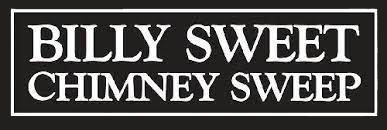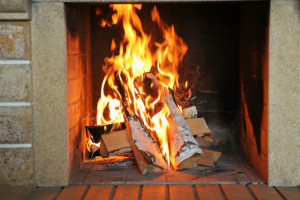1. Cut or purchase wood that is properly seasoned. This means it is cut and set aside to dry before used as firewood. Soft wood can dry for around six months, but hard wood should be left to dry for up to two years.
DON’T burn wood that isn’t properly seasoned. Doing so can raise the amount of creosote that accumulates in your chimney interior causing obstruction and chimney fires. Burning wet or green wood can also cause particle pollution in your home, which can lead to allergies or other health problems.
2. Have your chimney inspected and swept by a professional. “The U.S. Consumer Product Safety Commission, the U.S. Environmental Protection Agency, the National Fire Protection Association, and the American Lung Association – are some of the organizations that now encourage the regular maintenance of home heating systems and their chimneys in order to keep “the silent killer” at bay.” Read more about how your chimney can affect your health at the Chimney Safety Institute of America (CSIA).
DON’T try to clean your chimney yourself. Our chimney sweeps here at Billy Sweet’s Chimney Sweep are licensed, insured, and CSIA-certified. You cannot ensure the safety of your chimney unless it is inspected by a professional before wood-burning season.
3. Ventilate your home or business while your fireplace is in use. As gas is released through the chimney it changes the pressure in your home. Air pulled through the chimney is drawn from the house, and if the air isn’t replaced, the chimney may not work properly. This can be remedied by leaving a window cracked somewhere in the home.
DON’T operate large appliances that compete with your chimney for air or open you furnace door while ceiling fans or ventilation systems are running. When your fireplace works correctly, your heating system is more efficient.
4. Use proper kindling to start your fire. If there aren’t remaining embers in your furnace or fireplace, you should be able to ignite a fire using kindling and a small amount of paper.
DON’T use flammable fuels to start a fire. The vapor can ignite and start a chimney fire, or a house fire. If you use artificial logs, don’t treat them as real logs. Carefully read warning labels and instructions before putting artificial logs into your fireplace or furnace.
5. Feed your fire regularly to keep the fire at a steady temperature. This is the most efficient way to use a fireplace or furnace for home-heating.
DON’T overload your fire. Overloading your fireplace or furnace can overheat the walls around the furnace or fireplace and possibly damage the chimney.
Safety is Our Priority
Your fireplace is no laughing matter. According to the National Fire Protection Association Fire Analysis and Research Division “in 2011, an estimated 19,500 reported home structure fires involving fireplaces, chimneys and chimney connectors.” Click here for more tips to prepare your fireplace for winter weather.
At Billy Sweet’s we don’t want your business as the result of a chimney fire! We want your home or business to be safe this winter.

